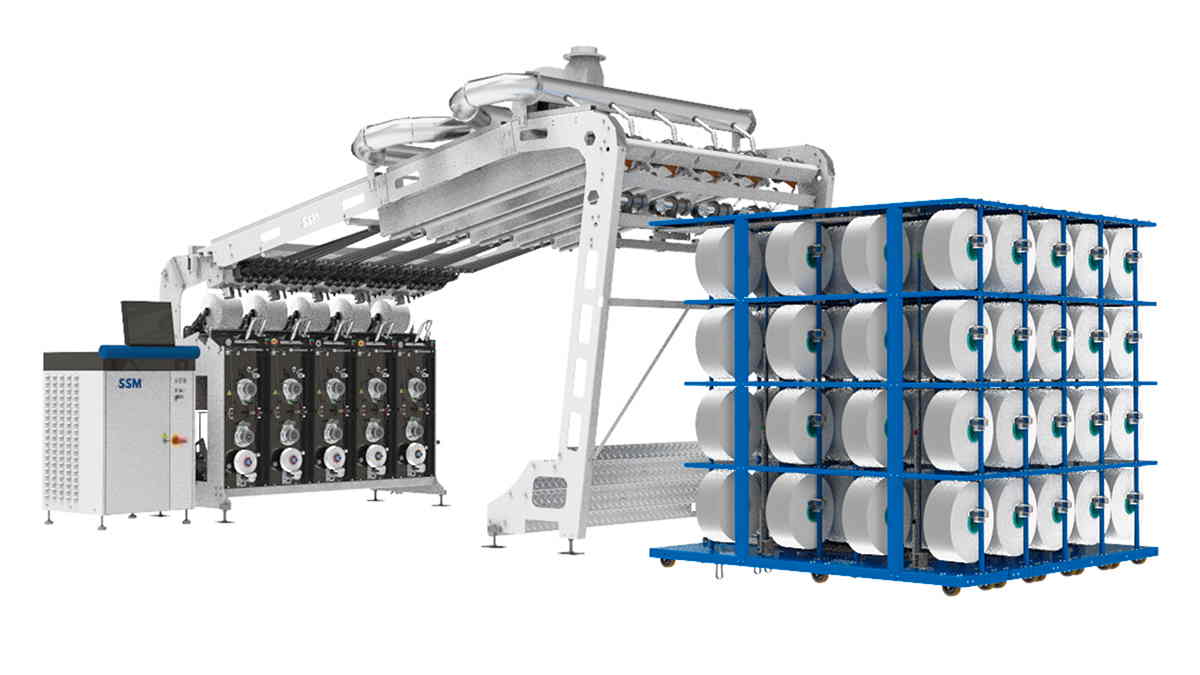A subsidiary of the Rieter Group, SSM Schärer Schweiter Mettler AG (SSM) brings solutions to the challenges faced by textile manufacturers in the market, such as flexibility, with the SSM single-position machine concept DP5-FT producing for various applications. Offering the right equipment for the needs of the market to produce special value-added yarns, the new concept provides advantages to manufacturers in terms of energy consumption and production efficiency, while enabling ease of use to operators with its different design.
Polyester DTY (Drawn Textured Yarn), which first appeared in the 1960s and has been in business ever since, has been developed over time for use in a wide variety of specialty yarns, ranging from coarse denier per filament (dpf) to microfilament and even super microfilament yarns. These yarns can be used to produce lightweight fabrics with a very soft touch. While more features available in DTY mean the production of more but smaller lots, this presents new challenges for textile manufacturers such as the need for more flexibility in the production process.
Up to 40 different recipes options on the new SSM texturing machine
An entire DP5-FT machine with 40 positions can be set up with up to 40 different recipes. Almost a standalone false twist (FT) machine with its own heater, control board, each position is equipped with individually driven, programmable motors. While there is no need to invest in an equivalent laboratory machine, customers can simply dedicate one or multiple positions of the DP5-FT to trials or sampling. Positions can then be reassigned back to normal production to maximize efficiency and reduce sampling costs.
The individual position concept also reduces energy consumption
The individual position concept also provides advantages in terms of energy consumption and production efficiency. Unlike shaft machines, the power consumption of a position is reduced when it is not in use, as all affected motors are stopped. Moreover, a power-saving function can be activated after a certain amount of idle time has elapsed to reduce the temperature of the heater and godet, maximizing the potential savings.
It is also common to find positions without yarn on a running spindle machine, as a wrap after a yarn break cannot safely be removed while running, or because a faulty position is awaiting the next machine stop. There are no such limitations with an individual position machine concept because each position can be stopped individually and serviced immediately, resulting in higher machine efficiency. In addition, the DP5-FT is also a convenient option for manufacturers whose primary priority is personal safety, as the individual position concept allows the use of much smaller motors, limiting the risk of severe injuries to operators.
Ideal option for customers starting a DTY business
The high flexibility of the DP5-FT is reflected by the minimum available number of five positions only, making it the perfect solution for customers entering the DTY business. The DP5-FT offers full flexibility in terms of lot sizes, types and counts of DTY yarns as well as better control of the supply chain. If a customer later wants to increase the DTY production capacity, the machine can be extended to include up to 40 positions without changing the head stock and using the same machine terminal.
It offers ease of control and inspection with its different design
The heated godet in SSM texturing machines stands out as a state-of-the-art feature in the production of DTY yarns and serves to adjust the heat of the DTY yarn and provide the required elasticity. Tube heaters, installed at the rear of the machine or under the platform due to their length on some machines, prevent operators from checking the tube heaters during production or removing the internal tube periodically for cleaning. On SSM texturing machines, the heat-setting godet is located at the front of the machine, enabling full control and inspection of the entire yarn path at any time without stopping the machine. Instead of using a tube heater with a predefined length, using a godet also allows operators to influence the duration of the heat setting process by increasing or decreasing the number of wraps around the godets.

